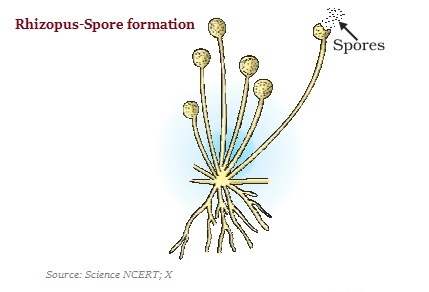
- Biology - Home
- Biology - Structure and Functions
- The Fundamental Unit of Life
- Biology - Tissues
- Biology - Animal Tissue
- Diversity in Living Organisms
- Biology - Plantae Kingdom
- Biology - Animalia Kingdom
- Biology - Vertebrata
- Biology - Transportation in Humans
- Biology - Transportation in Plants
- Biology - Excretion
- Biology - Control and Coordination
- Biology - Hormones in Animal
- How do Organisms Reproduce?
- Biology - Sexual Reproduction
- Biology - Reproduction in Animals
- Reaching the Age of Adolescence
- Biology - Heredity and Evolution
- Biology - Life Processes
- Biology - Respiration
- Microorganisms: Friend and Foe
- Biology - Why do We Fall Ill
- Biology - Natural Resources
- Biology - Our Environment
- Conservation of Plants and Animals
Biology - How do Organisms Reproduce?
Introduction
A basic occurrence in reproduction is the creation of a DNA copy; to produce copies of the DNA, cells use chemical reactions.
The DNA in the cell nucleus is actually the information source for creating proteins. Likewise, if the information is changed here, then different proteins will be created. And, these different proteins will eventually lead to altered the body designs.

DNA copies that generated would be similar, but may not be identical to the original. And, because of these variations, the new born cells are slightly different.
Further, the consistency of DNA copying during reproduction process is significant for the maintenance of body design and features.
Modes of Reproduction Used by Cell Organisms
-
The modes by which various Cell Organisms reproduce depend on their body designs. However, it is broadly categorized as −
Asexual Reproduction &
Sexual Reproduction
Lets discuss each of them in Brief −
Asexual Reproduction
-
Asexual Reproduction can be studied through the following different sub-categories −
Fission
Fragmentation
Regeneration
Budding
Vegetative Propagation
Spore Formation
Lets discuss each of them in brief −
Fission
In some unicellular organisms such as Amoeba, the cell split into two cells during the cell division and produce two new organisms (see the image given below).
It is also known as binary fission.
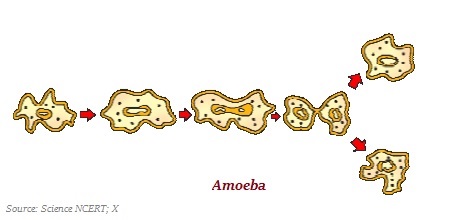
Many bacteria and protozoa simply split into two equal halves during their cell division and produce two identical organisms.
Remember, some other single-celled organisms, such as Plasmodium (the malarial parasite), divide into many daughter cells simultaneously, known as multiple fission (see the image given below).
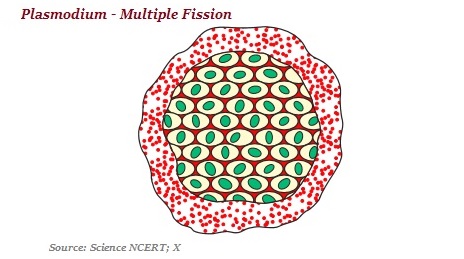
Fragmentation
After the maturity, some multicellular organisms, such as Spirogyra, simply breaks up into smaller pieces and these pieces or fragments grow into new individuals.
Regeneration
Some of the organisms, such as Planaria, if its body cut or broken up into many pieces, then many of these pieces grow into complete separate individuals; the whole process is known as regeneration.
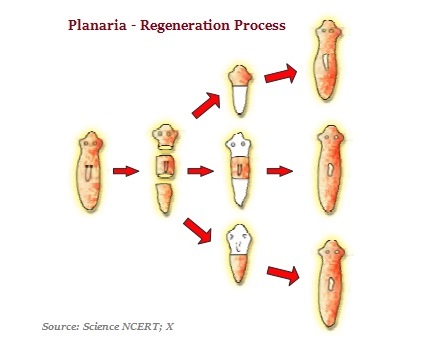
Budding
In some organisms, such as Hydra, because of the repeated cell division at one specific place, a bud develops, which later (once fully grown) gets detached from the parent body and becomes a new independent individual (see the image given below).

Vegetative Propagation
Under a favorable condition, there are many plants, which parts like the root, stem, and leaves develop into new plants; such process is known as vegetative propagation (see the image given below).
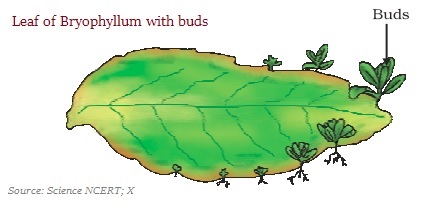
Spore Formation
Some plants and many algae undergo sporic formation (through meiosis cell division) that leads to the formation of spores. Further, these spores grow into multicellular individuals.
